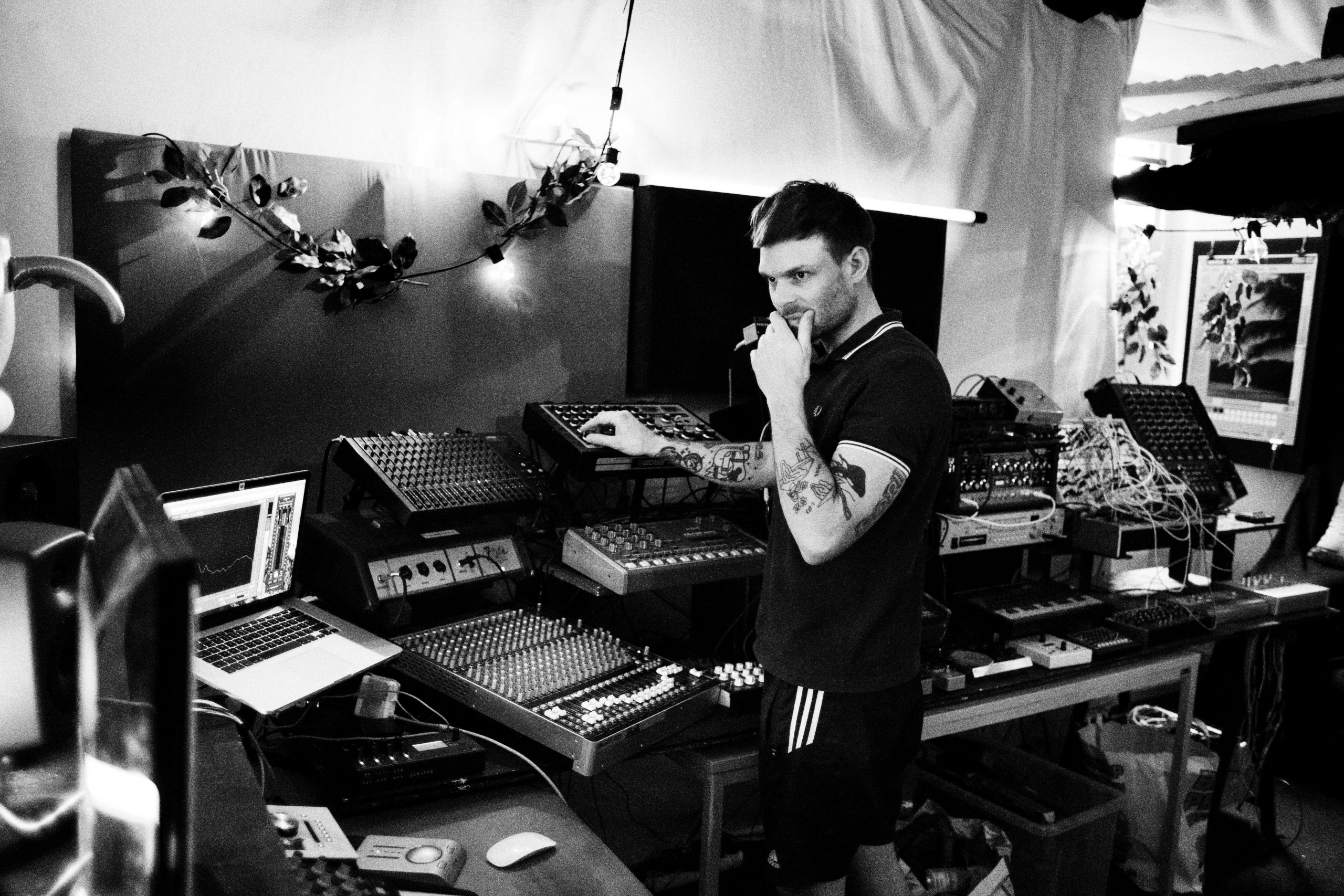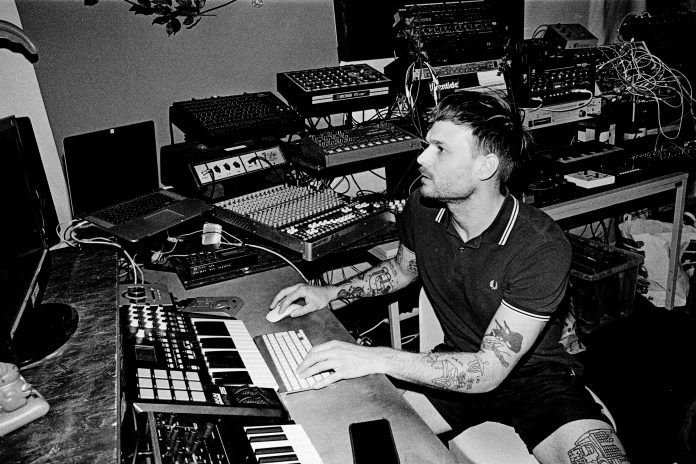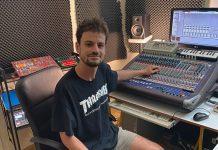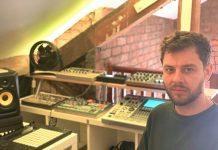For the first edition of The Source in collaboration with Trommel Music Swedish born Berlin-based artist, Per Hammar shares his studio gold. Taking pride of place in this editions insight is Per Hammar’s use of the new HyperCompressor plugin from Euromix. To get the inside track outside of the tutorial we caught up with Per to dive a little deeper…
You recently started a new project called Euromix. Can you tell us about it?
Ever since I started to make music about 15 years ago, I always admired the art of making a track sounding great. Sometimes even more than creating the musical content itself. I know how I want my own tracks to sound, and I guess I found out that my sound comes from a lot (…A LOT) of trial and error during all these years. In the last few years, I’ve been doing some mix and mastering jobs in between all the touring and my own production time.
So, when I and all of the other DJ’s got banned from working, I took the opportunity to concretize the idea of working as a mix and mastering engineer. So together with one of my best friends, Patrick Siech, we decided to start Euromix. What makes us different is that we also figure as a music hub, where we constantly let the community to have a look and take part of what’s going on behind the scenes on our two studios. We’re releasing our own plugins, based on tricks and tools that we use ourselves and we’re producing tutorials covering different studio hacks.
Can you tell us about your tutorial in depth?
This tutorial shows how I use our own plugin, the Euromix HyperCompressor, to get a track bouncy and overall tightened up. When you insert the plugin on a return channel (a.k.a. parallel compression), you can send in different parts of the track that you want to put some extra spotlight on. The HyperCompressor takes care of the rest. Depending on how much you send of every channel, it will react differently. In this tutorial, I’m showing what happens when you let the kick and the offbeat hi-hat take the command and let the rest of the channels follow.
Tell us about your favorite piece of hardware, when did you get it, what do you use it for, what makes it special?
Every time I get this question I have to take some time and think. I always have a machine that I’m into at the moment. Sure, there are a few different machines in the studio that sounds great, and I can start to mention them all. But when I see myself in the studio and trying to imagine what kind of gear I’m using, I often see myself in front of the mixer. I’m using it more as an instrument than just a summing unit. My patch bays enable me to get my effect units addressed out on the channels and then I jam with the volume, EQ, and sends/returns. It’s really nothing fancy. I believe it’s a Mackie Onyx 1640i.

Where do you get your inspiration from and what do you do if you hit a wall when trying to finish a track?
I’m constantly circulating in and out from more or less inspired phases. Either way, I always show up in the studio. By now I know myself, and if I can stick to my routines I have the best chances of doing something good. So, if my coffee machine is ready to serve me 1 litre of coffee at 09:30, I most likely got something done until I leave at 17:00. And when hitting the wall, the worst I can do is to listen to other artists’ music. That just makes my current derailing project sound even worse, and I might end up trashing it. And I don’t trash projects.
Take a break. Give it 15 more minutes. If you don’t feel it after 15 minutes, go home and start over tomorrow.
15 minutes is what it takes for the brain to adapt to a new task. Maybe you noticed that you might feel a little flow just after you started a new project. That’s because it went 15 minutes and your brain is pretty down to make that bomb track with you.
Tell us about something you’ve learned that really took your production up to a higher level?
Try things that are wrong. There are so many good tips and tricks out there, but many of them are very specific. So, what happens if you try that trick and it doesn’t sound like you thought?
You might end up without any idea what to do. What over time made me feel more comfortable, was to create my own toolbox with different tools for different situations. It can be to learn a plugin inside out and know exactly what to do with it in every situation. Or just try different combos of plugins and see what they do, in order to learn what they do in different setups.
What’s the plan for Euromix in the future?
We’re gonna keep on making producers music sounding even better, by mixing and mastering it. But also keep on giving away tools to upgrade people’s productions in the very beginning. Last week we released a video of how to reduce the CPU levels in Ableton Live with 50%. And in not too long, we’re dropping our next free plugin. I used it a lot lately and daaaaymm it sounds good. Until we drop it, it will remain a secret. But very soon! ;^)
More info on Per Hammar
Trommel Podcast | Facebook | Resident Advisor | SoundCloud | Bandcamp | Discogs
More info on The Source
Instagram









![Premiere: A1 – Per Hammar & Olga Korol – Na Zare [DH007]](https://trommelmusic.com/wp-content/uploads/2021/06/EP-ARTWORK-Nilly-Alan-218x150.jpg)


![Premiere: 1 – Gojnea76 – Legata [LWKY001]](https://trommelmusic.com/wp-content/uploads/2025/12/5-Cem-Sagisman-100x70.jpg)
![Premiere: B2 – I.O.N – They Are Looking At You [THRPY002]](https://trommelmusic.com/wp-content/uploads/2025/12/12f62236-c60a-4b4e-b8a7-df2e49e345e1-Ritmo-London-100x70.jpg)
![Premiere: B1 – JOSS – The Sun Is On Its Way To Us [ARR051-2]](https://trommelmusic.com/wp-content/uploads/2025/12/ARR051_part_2_a_label-Joss-Atreform-100x70.jpeg)
![Premiere: 3 – Alvaro Medina – Create Your World [SVM022]](https://trommelmusic.com/wp-content/uploads/2025/12/3.-Alvaro-Medina-Create-your-world-cover-Said-Moruki-100x70.png)
![Free Download: Nicole – Bird In Plane [TFD125]](https://trommelmusic.com/wp-content/uploads/2025/12/DSCF9256-100x70.jpg)
![Premiere: A2 – Otrera – Cheronca Ay (Sueezo Remix) [SUCRE01]](https://trommelmusic.com/wp-content/uploads/2025/12/photo_2025-12-14_14-34-18-100x70.jpg)
![Premiere: 1 – Memed Awad & Moruki – Future Fly [SVM020]](https://trommelmusic.com/wp-content/uploads/2025/12/Future-fly-cover-Said-Moruki-100x70.jpg)
![Premiere: A1 – Silat Beksi – iLLuminati [ARR051.1] Artreform - Silat Beksi](https://trommelmusic.com/wp-content/uploads/2025/12/CS1118784-01A-BIG-100x70.jpg)